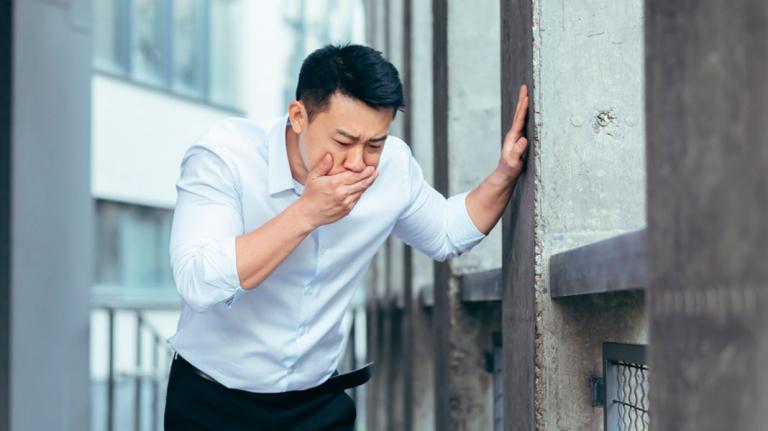Table of Contents
- What is monkey B virus and how is it spread?
- Symptoms of monkey B virus
- Diagnosis and treatment of virus B
- How to prevent monkey B virus infection
What is monkey B virus and how is it spread?
A 37-year-old man is in very serious condition in Hong Kong after being infected with monkey virus B or simiae virus, a pathogen whose natural hosts are macaque monkeys (especially rhesus macaques, pig-tailed macaques, and crab-eating macaques) and that it is extremely rare for it to be transmitted to humans, since only 50 cases of people who have contracted the infection have been recorded since the pathogen was identified in 1932, of which 21 died, according to data from the United States Centers for Disease Control and Prevention (CDC).
Monkey B virus infection can cause severe brain damage and has a 70% mortality rate in people who are not treated immediately. In addition, survivors may suffer neurological sequelae. Infection occurs when a person is bitten or scratched by an infected macaque monkey, or if their broken skin from a cut or wound comes into contact with tissues or fluids of the infected monkey (urine, feces, saliva, or brain or brain tissue). spinal cord). In 1997, a researcher died from a B virus infection after body material from an infected monkey (probably feces) splashed into her eye. In 2021, Chinese health officials reported the death of a veterinarian who worked at a research institute and who died after becoming infected with the Monkey B virus days after dissecting two monkeys.
This incident shows that interaction between humans and wildlife in urban areas represents a potential risk to public health.
The CDC indicates that there has only been one documented case of an infected person transmitting the B virus to another person. In the Hong Kong patient, it is believed that the infection occurred because he suffered injuries when coming into contact with monkeys carrying the disease during a visit to the Kam Shan or Monkey Hill park, where around 1,800 macaques live. A test of the patient’s cerebrospinal fluid confirmed the presence of the B virus. This incident provides evidence that interaction between humans and wildlife in urban areas represents a potential risk to public health.

Symptoms of monkey B virus
The incubation period for this disease in people varies and, although it generally lasts between 2 and 7 days after exposure, symptoms can appear up to 5 weeks later. The infection can manifest itself with a variety of signs, from flu-like symptoms to neurological alterations. In humans, “it can attack the central nervous system and cause brain inflammation that leads to loss of consciousness,” says Kentaro Iwata, an infectious disease expert at Kobe University in Tokyo. Thus, the virus can cause severe encephalitis (inflammation of the brain), which can lead to death or permanent neurological consequences if not treated properly. The National Institute for Occupational Safety and Health indicates that symptoms may include:
- Vesicular rash near the point of inoculation: Vesicles and sores may develop at the site of the bite or scratch. These skin lesions are similar to those seen in herpes simplex infections.
- Swelling and redness: The area around the bite or scratch may become swollen and red.
- Fever: it is one of the first symptoms and may be accompanied by chills.
- Myalgia (muscle pain).
- Headaches.
- Fatigue and general malaise: feeling of weakness or excessive tiredness.
- Nausea and vomiting: may occur as part of a systemic reaction to the virus.
- Abdominal pain.
- Diplopia.
- Neurological problems: These include changes in behavior, confusion, agitation, or drowsiness.
- Vertigo
- Dysphagia.
- Dysarthria.
- Cranial nerve palsy.
- Ataxia.
- In the most severe cases, flaccid paralysis occurs in the lower extremities, which extends to the upper extremities and the chest and usually causes death, even with antiviral treatment, due to respiratory failure.
Diagnosis and treatment of virus B
The diagnosis is made by detecting viral DNA in tissue samples or body fluids using PCR (Polymerase Chain Reaction). In cases of neurological complications, imaging studies such as MRI may be useful to evaluate the extent of brain inflammation or neurological damage.

Treatment for B virus infection must be prompt and aggressive due to the potential for serious complications, and may include antivirals, such as acyclovir or ganciclovir, although their effectiveness may be limited. On the other hand, management of fever, pain and inflammation is crucial. Antipyretics and pain relievers may be given to control these symptoms.
In cases of severe encephalitis, management in an intensive care unit may be necessary to provide life support, management of intracranial pressure, and other critical interventions. Therefore, prevention of exposure is crucial, especially for laboratory workers and animal handlers who handle macaques.
How to prevent monkey B virus infection
There is no vaccine or definitive cure for monkey B virus infection, so prevention is key to avoid its serious complications. The CDC warns that tourists who are going to visit places where there are macaque monkeys have to stay away from them to avoid being bitten or scratched and should not feed these animals.
These experts also explain that workers who may be exposed to these animals, such as veterinarians or researchers, should:
- Take appropriate precautions to protect eyes and other mucous membranes from possible splashes of biological material, especially those who work with or near non-human primates. This includes the mandatory use of PPE (personal protective equipment) during activities that may involve risks, as well as specific decontamination procedures in case of exposure.
- Do not underestimate the risks associated with handling animals in research settings and have clear and accessible protocols for managing accidental exposures.
- Clean any bites, scratches, or exposure to the macaques’ tissues or secretions immediately. Gently wash and rub the wound or contact area with the monkey with soap, detergent, or iodine for 15 minutes, and then run water over the wound or area for another 15 to 20 minutes.
- Immediately notify healthcare professionals of any exposure to fluids or materials potentially contaminated with dangerous pathogens to determine if antiviral treatment is necessary.














